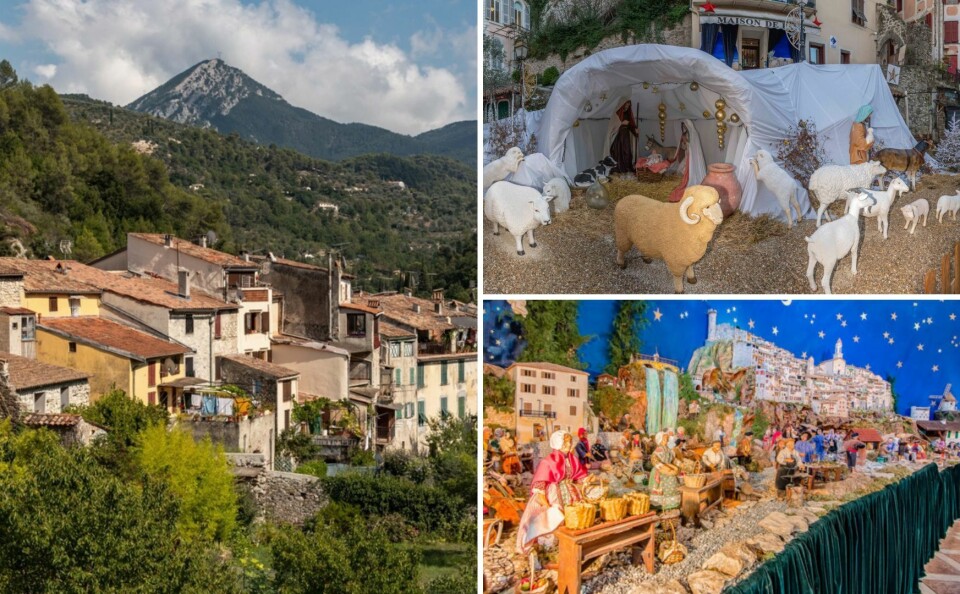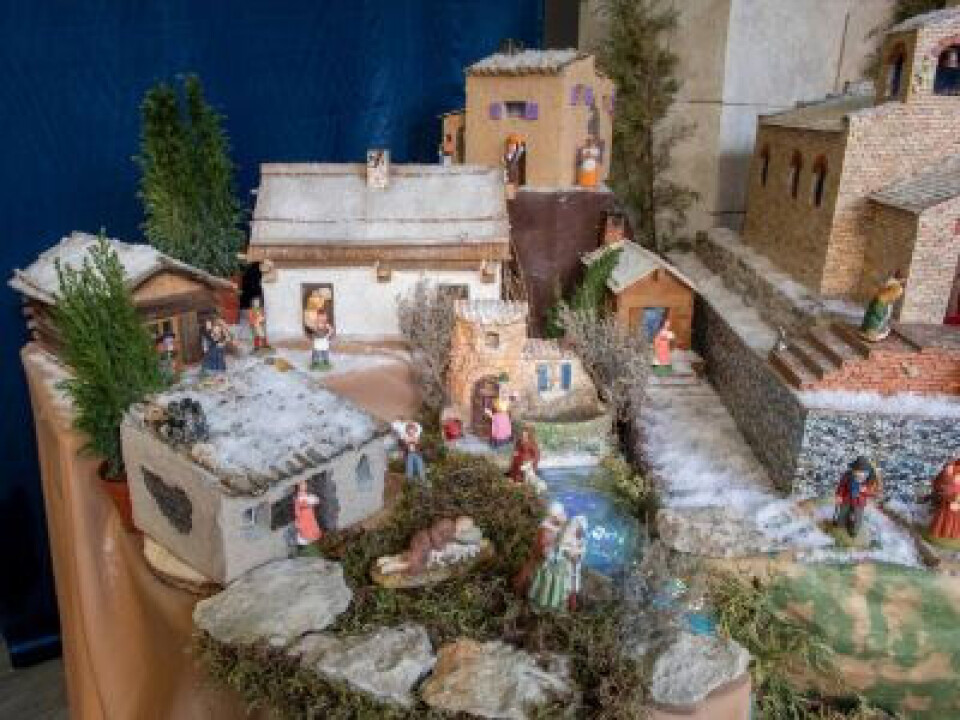-
Know your cheeses and their seasons: which to eat in France in February
Cow’s milk cheeses dominate as winter comes to an end
-
Films and series to watch in February to improve your French
Every month we outline good film and TV series to improve your language
-
Duck Cold! Four French phrases to use when it is freezing outside
France's current cold spell is set to continue for the next few days - we remind you of French expressions to use to describe the drop in temperature
The French village with more than 500 Christmas nativity scenes
The hill-top Provencal village of Lucéram has become famous for having the most festive crèches in France

In Alpes-Maritimes (06), 27km north of Nice, the picturesque village of Lucéram appears as a cluster of terracotta-topped houses overlooking the surrounding valley.
It is a village perché, a ‘perched’ village, constructed on a high point in a strategic defensive position, similar to several other villages in the Alps.
In other aspects, however, it is far from ordinary.
Circuit of Christmas scenes throughout the village
Despite being home to fewer than 1,300 residents, Lucéram is famous for having more crèches than any other village in the country, and this does not mean children’s nurseries, but Christmas nativity scenes.
Across France, you will see model replicas of the nativity arranged in churches, schools and public spaces like town squares. Some towns even organise a full-scale crèche vivante, a live-action affair with adult actors.
In this small medieval village, however, the festive celebrations revolve around a circuit of up to 500 nativity scenes, placed in the streets, on window ledges, in barns and even in the village bread oven.

Photo: A nativity scene with small figures called santons; Credit: Maison de Pays de Lucéram
This Circuit des Crèches is an annual event proudly organised by the Maison de Pays de Lucéram, starting on December 2 and continuing until a grand closing ceremony on January 7 at 18:00.
Read more: Aix-en-Provence: the refined city full of French Christmas tradition
Front page news in 1996
Now in its 26th year, the tradition started when a Provencal nativity scene was displayed behind the Chapelle Saint-Pierre, which in 1996 grew to include over 100 figures dressed to represent former trades in period costume.
This display was featured on the front page of the publication Nice Matin and attracted a number of tourists.
Since then, the Circuit des Crèches has expanded, welcoming over 50,000 visitors every year.
During last year’s event, 83-year-old villager Désirée Vivaldi explained that she had created or helped with at least 10 of the 500 scenes.
“I love this,” she shared, “seeing my village all decorated, beautiful and lit-up like this, I’m absolutely delighted.”
Small figures called santons are used in Provence
A true crèche should depict Mary, Joseph and the baby Jesus, the ox and donkey from the manger, and will often include the three kings and shepherds.
The crèches in Provence traditionally use santons, which are small figures made of clay that depict ordinary people on their way to pay homage to Christ.
Look out for figures representing the local mayor, priest and the fada (fool), who symbolises simple delight at Christ’s birth.
Some of the most precious examples of crèche scenes are preserved in the Maison de Pays de Lucéram, which is open to visitors throughout the year.
Even if you cannot make it to the main event, you can still experience the microscopic detail of some of the classic nativity scenes from the past 25 years. It is worth visiting at any time.
Read more: Visit magical Marseille and swap snow for sun this Christmas
Rich history in Lucéram all year round
This rocky outcrop was once topped by a medieval chateau and ramparts, and you can see traces as you explore, particularly of the tower ruins.
In the late 1400s, Lucéram was one of the stops along the route du sel salt-trading route, and many of its architectural gems date from this prosperous period.
Construction started on Sainte-Marguerite church in 1487, and its stunning interior was created in 1763, in the highly decorative and colourful Rococo-Italian style.
There are also two chapels in the village, the Notre-Dame-du-Bon-Cœur and Chapelle Oratoire Saint-Grat, both of which boast impressive wall paintings and are classed as Historic Monuments.
This village feels like it is harbouring a hidden secret, with winding alleyways that disappear around corners, cobbled streets and high walls that seem to shelter you from the modern world.
Take time to explore the medieval structures and remnants of daily life such as the old lavoirs, communal stone troughs where villagers would gather to wash their clothes and catch up on the latest gossip.
Related articles
Town hall cannot have a nativity crèche, France’s highest court rules
Day 12 French regional Christmas specialities: Seafood platter
Six Christmas gift ideas for people learning French
























